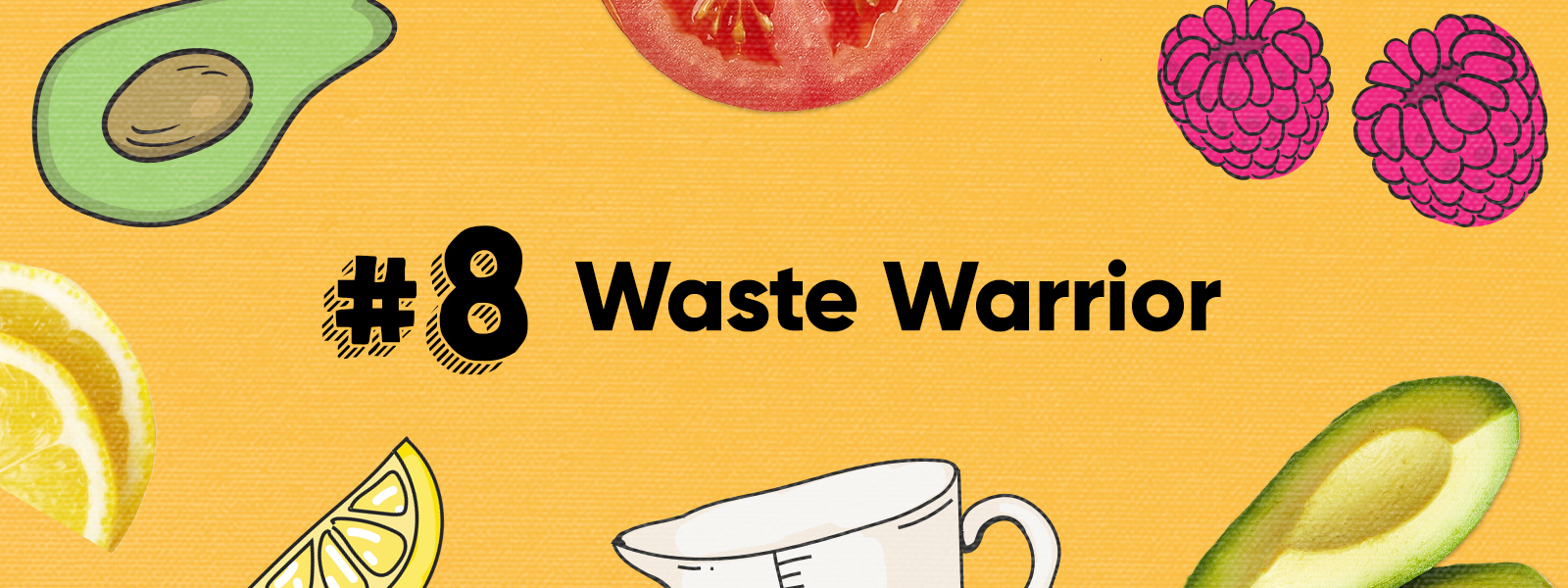We waste a lot of food here in Australia! That’s bad news for your family’s budget and bad news for the environment. Waste Warrior Will hates to think about all the good food that goes into landfill, not to mention the huge waste of land, water and energy that went into growing, making and transporting the food before it even arrives in your kitchen!
Food waste by the numbers
- 7.3 million tonnes of food in Australia goes to landfill every year
- That’s equal to 300kg per person, or 13,000 Olympic swimming pools, or throwing away one in five bags of groceries
- 75% of all food sent to landfill in Australia comes from households
- And yet, 5 million Australians struggle to access or afford food every year
What happens to food in landfill?
Food that goes to landfill doesn’t break down the same way it does in compost. Because of the lack of oxygen in landfill, it takes a really, REALLY long time to decompose. This results in the production of methane – the same greenhouse gas cows and some other livestock produce when they burp, belch and fart. Yuck!
Not so fun fact: Food waste accounts for more than 5% of Australia’s greenhouse gas emissions!
The good news is there are so many things we can do to reduce food wastage and save the environment, let’s do it!
10 ways to be a Waste Warrior
1. Only buy what you need. Before your parents go shopping, help them look at what is already in the fridge, plan what to cook, write a shopping list and stick to it!
2. Know your dates. ‘Best before’ means the food’s taste, colour or consistency will reduce over time, but it’s usually safe to eat for a little while after this date. But don’t mess around with ‘use by’ dates. Once foods pass their use by date they could make you sick if you eat them. Find a way to use these foods soon after buying them!
3. Be flexible with your ingredients. If a fruit, vegetable or anything else appears to be getting old try to use it in a meal before it’s too late. Pizzas, frittatas, and stir fries are just some recipes where you can play around with ingredients.
4. Eat the ugly stuff. Don’t discriminate because a carrot isn’t its usual shape, or that apple has a few spots on its skin. They taste just as good as the perfect stuff.
5. Be like Elsa. Freeze foods or leftover cooked meals so you can eat them later. Check out the food safety tips on the 12 before 12 website for more
advice on freezing foods.
6. Use it all. Old vegetables and preparation scraps like the end of onions can be used to make stocks, sauces, jams, pickles or anything else that you can preserve!
7. Don’t overload your plate. Start with a small serve, you can always add more if you’re still hungry.
8. Eat leftovers rather than buying more food! Simple.
9. Sharing is caring. If you have a lot of food left over, share it with friends, family, neighbours and those that are less fortunate.
10. All is not lost – compost! This is nature’s way of recycling and is a great way to feed your garden. Compost enriches the soil with lots of nutrients that support the growth of new plants.

